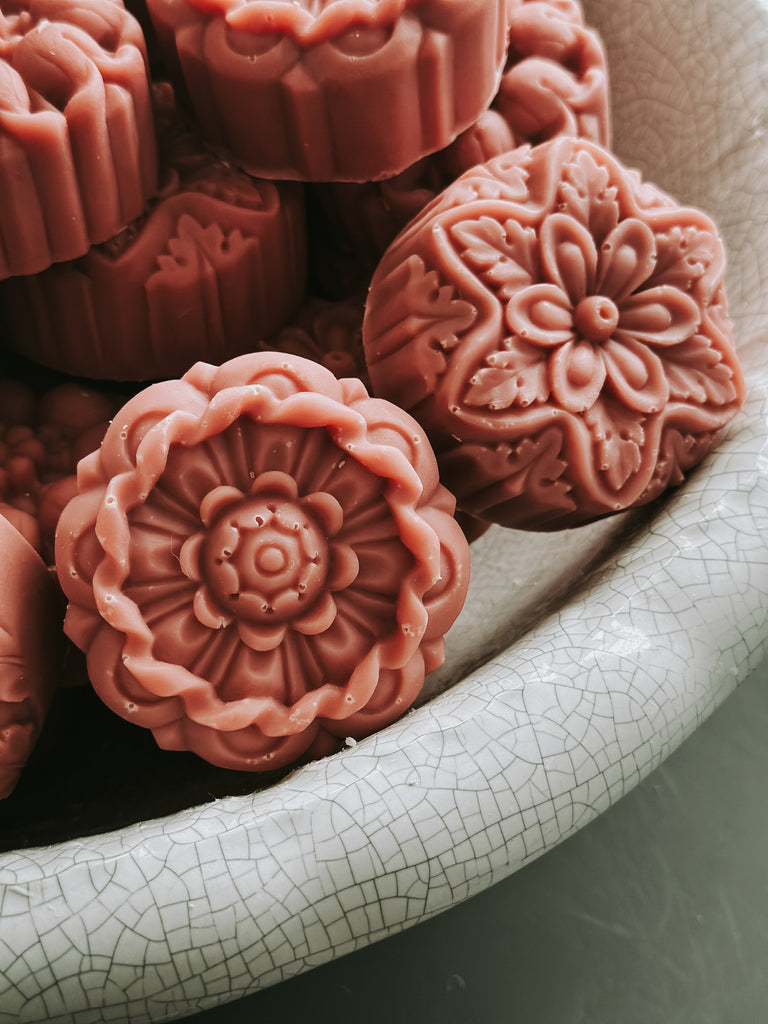Making soap is a delicate process, one where time and patience matter just as much as the ingredients. When you first make a batch of soap, it’s tempting to admire its beautiful swirls, its smooth surface, and its fragrant scent and think, “I’m done!” But the truth is, there’s one crucial step you can’t skip: curing.
Curing is the magic that happens after you make soap, and while it might seem like an afterthought, it’s actually when the soap truly becomes what it was always meant to be.
What Does Curing Mean?
Curing is the process where your soap solidifies, hardens, and becomes milder over the course of several weeks. While the soap may look ready right after you pour it into molds, it’s still going through important chemical changes. During curing, moisture from the soap slowly evaporates, allowing it to become firmer and more gentle on the skin.
But why does this matter so much? Simply put, curing ensures that the soap is as nourishing and long-lasting as it can be. Without this step, your soap may end up too harsh or dissolve far too quickly in the shower.
Why Does Soap Need to Cure?
When you mix oils and lye to make soap, a chemical reaction called saponification occurs. This reaction creates soap and glycerin, but it also produces some extra moisture. If you don’t give the soap time to cure, that moisture will leave the soap too soft, or in some cases, still have some active lye left in it. The curing process allows that moisture to escape, and any residual lye to neutralize, leaving you with a gentle, balanced bar.
Curing also helps balance the oils. Soap that’s not properly cured can feel too greasy or dry on the skin. But when the curing process is allowed to unfold, the oils and butters in the soap reach a beautiful equilibrium, resulting in a soap that cleanses without stripping the skin, moisturizing without leaving an oily residue.
How Does Curing Affect Quality?
The quality of your handmade soap is truly born in those curing weeks. It’s during this time that the soap transforms from a soft, freshly made block into a hard, luxurious bar that will stand the test of time. A well-cured soap will last longer, produce a rich lather, and have a much more refined texture than one that’s rushed.
On the flip side, soap that hasn’t been properly cured can feel rough or sticky, lather poorly, or even develop an unpleasant texture. Plus, a poorly cured bar will dissolve quickly in water, meaning you’ll find yourself with less soap than you expected. So while waiting the recommended four to six weeks might feel like a long time, it’s really the final act of care that gives you a soap that’s worth using—and savoring.
The Beauty of Patience
I know the urge to try out a fresh batch right away. There’s something so satisfying about creating soap from scratch, watching the transformation unfold, and finally having a product that’s yours. But over the years, I’ve learned that the wait is part of the journey. Soap curing is like the last brushstroke on a painting—necessary, and ultimately, it brings everything together.
So, next time you’re waiting for a batch of soap to cure, take a moment to appreciate the process. It’s not just about making soap. It’s about giving that soap the time it needs to shine, to reach its full potential, and to be the best version of itself for your skin. Patience truly does pay off when it comes to soapmaking, and the quality of the end product is proof.
And when you finally get to use that perfectly cured bar, you’ll understand why it was worth the wait.


Leave a comment